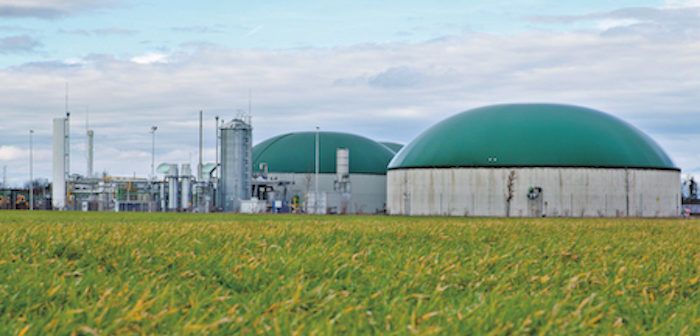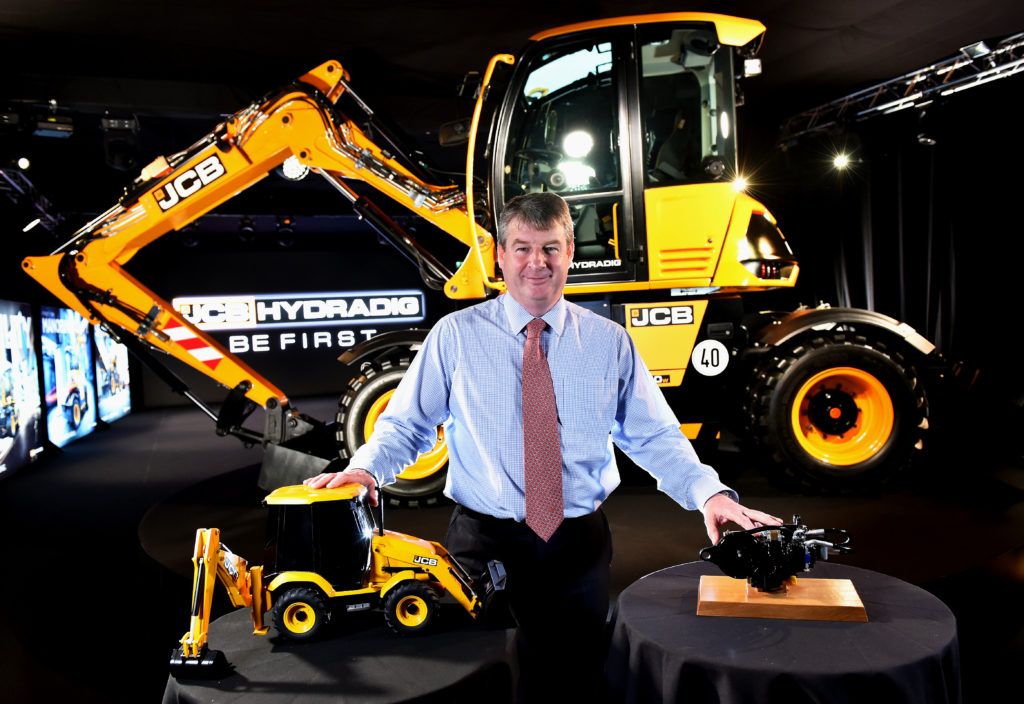Whenever renewable energy is discussed, the talk quickly turns to a green, electrically driven future conjured up by media images of windmills, solar panels and bunny rabbits. Unfortunately, everyone who has even the basic concept of what it would actually mean to junk the internal combustion engine knows that this scenario cannot possibly become a reality.
Our governments lurch from one technological soundbite to the next without apparently considering realistic options. As we start to experience the problems of charging and operating electrically powered vehicles in everyday circumstances, it is increasingly evident that, as engineers, our challenge is still to develop efficient ways of powering the prime mover in a vehicle or machine with as little environmental impact as possible, and that includes the avoidance of the truly horrific visual impact of wind farms that inhabitants of many countries are being asked to endure.
Natural gas is abundant in our world and it is becoming one of the favored options for the generation of electricity. Companies such as the German engine manufacturer MAN have been exploiting the need for large gas-powered engines for decades, with units like those in its E32 range. In recent years, MAN has translated some of that success to the municipal transport sector – with an average market share of 39%, MAN is Europe’s leading supplier of gas-powered buses. Gas power accounts for 20% of all MAN city buses sold during 2016.
Manufacturers recognize that generally the engines used in these vehicles are simply converted diesel power plants. Steven Nendick of Cummins comments, “CNG/LNG engines are built on the same production line and share the same key components – blocks, cranks, etc – as their diesel cousins.”
This makes sense, so for manufacturers, the principle modification has become the introduction of spark ignition and the requisite reduction of the compression ratio. This fact, coupled with the lower per-unit energy value of the fuel (60-70% of an equivalent diesel engine) results in a generally lower engine performance in terms of power and, more importantly, torque. This works for bus operation, stationary applications, and to some extent hybrids, where the power requirement is more or less constant. But these effectively de-rated engines may not be so attractive in conventional off-highway applications where maximum output is frequently demanded of the engines.
However, the motivations for considering gas more widely are many. Citing the principle arguments, firstly there’s the cost of fuel: Depending on global prices and location, natural gas can be priced as low as 20% of the price of diesel fuels.
Then there are emissions: Burning natural gas in an engine results in a straight 15-20% reduction in carbon dioxide emissions and a dramatic reduction in other pollutants.
Finally there’s the cost of any aftertreatment: Because of the purity of the burn in a natural gas engine, exhaust is handled by a simple three-way catalytic converter. No SCR, no DOC, no particulate filters.
Serious steps have been taken by both New Holland and Deutz in recent years to assess the viability of natural gas in agricultural tractors as many farmers are now considering natural gas in the form of biogas as a fuel. Deutz collaborated with the University of Rostock and the Deutsche Bundesstiftung Umwelt (DBU is the Environmental Agency in Germany) on the conversion of its TCD 3.6 diesel engine.
The engine, a four-cylinder 3.6-liter diesel unit, was a stock production unit taken directly from the factory. It underwent several reworks to fit spark plugs, modify the compression ratio, and remove the common-rail inlet system and replace with a manifold to connect the inlet ports to a gas carburetor.
Then the tractor was fitted with a number of separate pressure vessels holding around 132 lb (60kg) of CNG, which is roughly equivalent to 16 gallons (73 liters) of diesel in terms of fuel capacity. Final testing took place at the end of 2015, with a reported positive response and the conclusion that production tractors using CNG engines were a viable concept and in practical terms a desirable production solution.
New Holland took a different approach for its methane-powered tractor prototype, taking an existing NEF Series six-cylinder gas-powered variant from its sister company IVECO, which already used this model in commercial vehicles set up for gas. As the commercial-vehicle variant of the engine does not form a chassis component, the block of the engine had to be reinforced prior to installation.
The New Holland project retained the common-rail concept and utilized a reprogrammed ECU to effect the required ignition timing. The engine was installed in a T6.180 tractor unit produced in the company’s plant in Basildon, in the UK.
Retaining the common rail meant it was easy to address combustion-related issues, for example that of unburned fuel igniting in the exhaust tract causing a ‘knock’ or ‘popping’ sound during deceleration. So by sensing any hydrocarbons present in the exhaust gas and adjusting the mix via the ECU, New Holland eliminated this condition in this engine. Refinement like this is a massive step in providing a ‘like for like’ driving experience compared to the diesel variant.
“The T6 Methane Power tractor is one of the cornerstones of our Clean Energy Leader strategy, which we launched 10 years ago to increase farming efficiency and sustainability,” says Carlo Lambro, New Holland brand president. “We saw early on that alternative fuels are key to achieving a low-carbon future for agriculture, and we have invested accordingly. Today, we see methane and propane as the fuels with the greatest potential for the development of technologies that deliver on all fronts: performance, costs and sustainability.”
Professor Colin Garner of Loughborough University, an expert in fueling for internal combustion engines, agrees: “The high level opportunities with methane are generally good. Methane offers lower CO2 emissions because of higher hydrogen to carbon ratio of the molecule, compared to diesel. World supplies are abundant and methane is currently cheaper than diesel fuel.”
For New Holland, the project was overseen by FPT Industrial, the engine development and production wing of CNH Industrial. And like other major engine manufacturers, FPT Industrial has been eyeing the gas-fueled market for some years.
Based in the center of Europe and providing engines for both road and off-highway applications, FPT has reacted to the demand for cleaner emissions within cities by providing a range of spark ignition engines based on the company’s automotive product. Even now, the automotive market still provides the catalyst for development simply because of the volume of production in that sector.
However, it has become clearer in recent years that the demand for clean engines currently driving the automotive industry will spill over into the industrial sector as products become more widely accepted. To this end, FPT Industrial has set up an R&D team to concentrate purely on gas vehicle engine development: the Hi-eNG project.
“Natural gas is the cleanest and most virtuous thermal engine fuel. Its technology is well tested, ready for the market and will produce environmental benefits right now”, says Pierpaolo Biffali, head of product engineering at FPT Industrial. According to Biffali, the latest NG engine, the Cursor 13, “reaches near zero CO2 emission when fueled with biomethane”.
This project is aiming for second-generation, high-efficiency natural gas engine and expects that, when finished, torque, rated power and the reduction in greenhouse gas emissions will all show a 10% improvement compared with the company’s baseline gas engine.
The team intends to validate proposed changes using their single cylinder combustion simulation engine. Examples of features in development are pent-roof combustion chambers with ‘tumble flow’ intake ports and twin injectors, both of which promote sufficient gas flow into the combustion process.
FPT Industrial is also testing a centrally mounted spark distributor (rather than a plug and a high-pressure cooled EGR circuit) which helps to reduce throttling loss at part load and means that the engine ‘feels’ more like a diesel.
With the growing pressure on environmental responsibility, a handful of the major players are turning their attention to the challenge of producing engines that can handle both natural and biogas as a fuel within an interchangeable engine envelope. There are still challenges, as underlined by Prof. Garner’s caveat: “To get a decent energy per unit volume into the fuel tank, of a vehicle you need to store it at either high pressures, or in a liquefied state (i.e. below -163°C (-261.4°F)) and keep it there. These are not barriers, as it is being done
– it is just easier with diesel which can be stored at very high energy density (i.e. energy per unit volume [J/m3] at normal atmospheric pressure and normal, ambient air temperatures.”
The target is obvious: give the customers viable ranges of industrial engines that perform equally well on either gas or diesel and are physically interchangeable.
Thesewill provide the OEMs with a more flexible product to offer to new markets which are, or will become, environmentally sensitive. These initiatives should be applauded by our industry and supported as truly viable options for the future.





